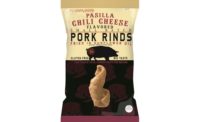Although Pocky is well known in Japan, it’s just now transitioning to the U.S. snack market. Savvy American consumers may already be familiar with the brand, but previously, one would have had to gone to a specialty market (such as an Asian grocery store) to find it on the shelves.
Now, Pocky is aiming to become more widespread, starting in Southern California, its U.S. home base.
We caught up with Akitoshi Oku, president of Ezaki Glico USA, and were able to chat about Pocky’s origins and its new U.S. presence.
Liz Parker: Which retail channels have been most important for sales? (convenience, drug stores, traditional grocery, specialty grocery, warehouse/club stores, etc.)
Akitoshi Oku: Because Pocky originated in Japan, Asian grocery stores are hugely important to our U.S. sales. But traditional grocery and club stores have increasingly become important over the past several years because they have allowed us to expand distribution and have made our products available to customers who do not frequently shop at Asian grocery stores, or don’t have Asian stores in their area. We are also beginning to focus our efforts on convenience and drug stores.
LP: What do fans say that they love about Pocky? What makes it so appealing?
AO: Fans love that Pocky is an authentic Japanese brand that has been loved in Japan for 50 years. When someone eats Pocky, they are getting a true piece of Japanese culture. Fans also love Pocky because it’s such a unique snack. The biscuit sticks dipped in chocolate are different from other traditional American snack foods and offers something unique to consumers, especially millennials who are always looking for the newest thing.
Pocky appeals to consumers because it’s delicious, mess-free—because part of the stick is not dipped—and easy to share with friends and family.
LP: Pocky started in 1966 in Japan. How has the brand changed over time?
AO: When Pocky was first released, it was considered to be a snack for children. Now, our main consumers in Japan are adult women who most likely grew up eating Pocky during childhood.
Over the years, the Pocky product line has evolved from the original Pocky Chocolate to a variety of limited edition and seasonal flavors. In Japan, there have been more than 100 Pocky flavors introduced, and currently 19 exist in the market. Pocky is also now sold in many different countries around the world. To date, 10 billion boxes have been sold worldwide since 1966.
LP: Which aspects of product branding/marketing translated easily from Japan to the U.S. market? Which ones required changing?
AO: Although Pocky is a household name in Japan, the awareness and brand presence is still low in the U.S. American consumers see Pocky as a new product, so we have to begin by educating customers on the history of Pocky and also initiate trial of the product. It’s a totally different strategy than in Japan. Glico Japan, Pocky’s parent company, leverages celebrities in many of their marketing campaigns, which are conducted on a large scale, national base. They also focus their marketing efforts on various other brands under the Glico umbrella, which includes confectionary, ice cream, and dairy product lines. In the U.S., we focus the majority of our marketing efforts on Pocky and are more focused on a regional basis, mainly the West Coast at this time.
Pocky’s “Share Happiness” brand tagline translates extremely well to U.S. consumers and did not require any changing.
LP: The Pocky Share Happiness Tour – is this still ongoing? How do you decide what cities to go to?
AO: We determine the tour cities based on our distribution footprint and population, and each tour lasts for 5-6 weeks at a time in each city. Since 2013, the tour has stopped in LA, San Francisco, San Diego, New York, New Jersey and Chicago. We initially started in Southern California, our U.S. home base, and have slowly expanded into other major U.S. cities. We always get requests from passionate fans for the tour to come to their city or a particular event, so we try to take into account their feedback when planning for future tours. We will be starting back in the fall and will continue to conduct the tour in 2017.
LP: What’s next for the brand?
AO: We hope to continue our expansion into mainstream grocery stores nationwide and increase our distribution. We are also focusing on introducing new flavors into the Pocky family.











